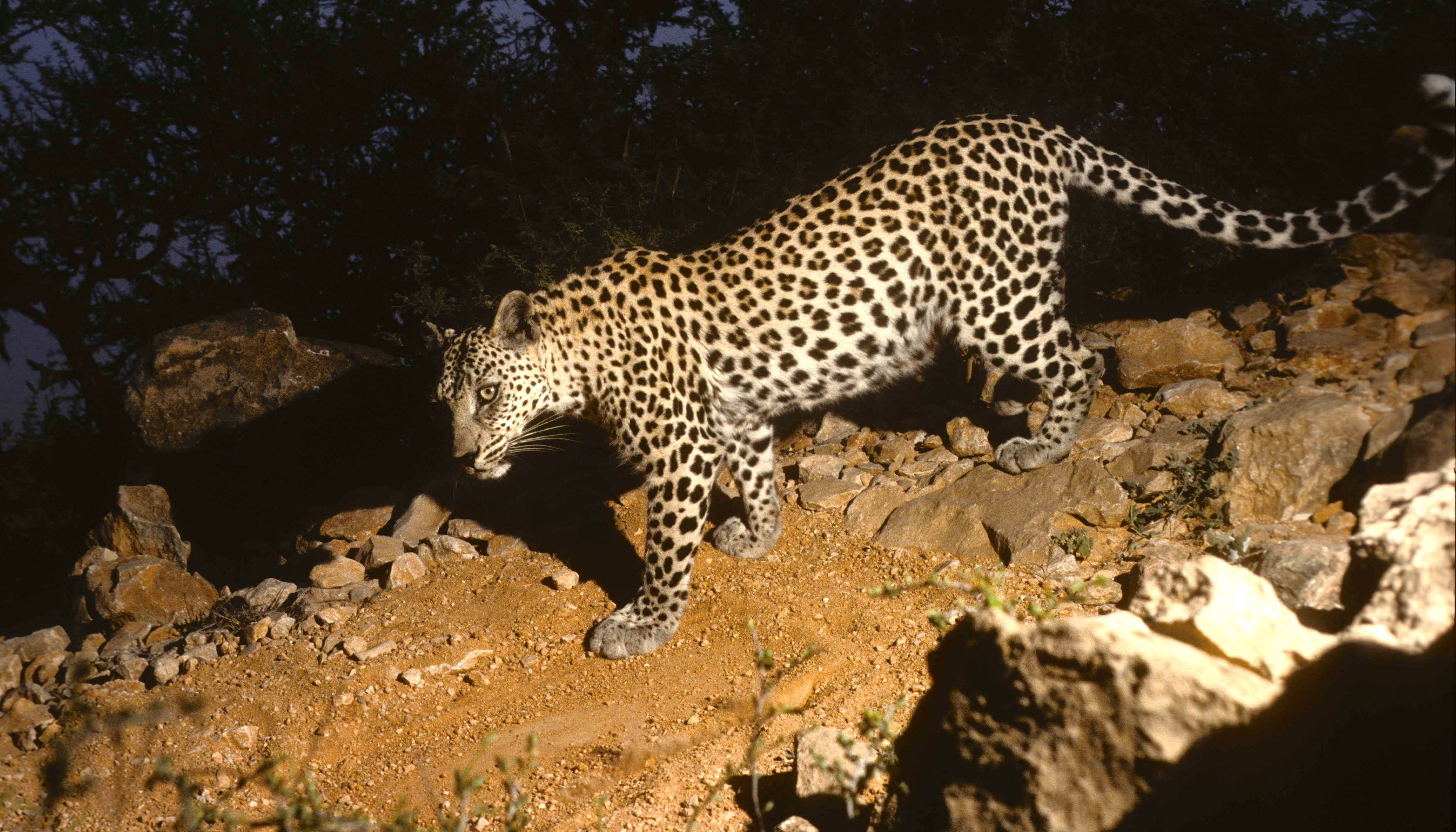
A wildlife photographer, who captured the Arabian leopard on camera, expressed happiness at the conservation efforts being undertaken by his colleagues to save the big cat in Oman. David Willis said that though he photographed the Arabian leopard through camera traps in the wild in 1995, he could no longer keep it up because of the rigorous work involved and advancing technology. “I only hear about the latest developments in leopard conservation through my friends, Hadi and Khalid Hikmani, and I am happy that they along with others are doing good work to ensure the leopard has a future in Oman,” he said.
“I am not involved in any of the latest developments in photographing or conservation of wildlife in Oman. I found that I could not compete with the latest technology in hand-held cameras and camera traps. Also, I was getting too old to scramble around the mountains carrying all the equipment needed,” Willis said.
The veteran wildlife photographer said that he began photographing wildlife in Oman in the mid-eighties.
“I became interested in photographing wildlife while travelling around Africa. When I came to live in Oman in 1986, I looked around to see what wildlife existed in Oman. I got the first photos of the Arabian leopard in the wild in Oman in early 1995 by using camera traps that I built myself,” he said.
“I photographed other wild animals in Oman using a hand-held camera such as the white Arabian oryx, Ibex, and gazelles but most of my interesting photos have been obtained by camera trapping. A lot of Oman’s wildlife is nocturnal and shy, but I have managed to get photos and video of caracals, ratels, wild cats, wolves, and hyenas,” he added.
**media[937039]**
Tracking the big cat
Willis disclosed that he became involved in conservation work after he got his first photographs of the Arabian leopard. “Not long after I succeeded in getting my photos of the leopard, Dr Andrew Spalton, Advisor for Environmental Affairs at Diwan of Royal Court, started a programme to study the Arabian leopard using professional camera traps. I was able to help him with that project, and later, when he radio-collared some leopards,” he said. “Hadi also worked with Spalton with the radio collaring, and later, took on the scientific work with camera trap recognition and analysis of leopard scats. Now, there is a large team of Omanis doing this work, as well as protection of wildlife and habitats in Dhofar,” the veteran photographer remarked.
**media[937040]**
‘Amazing’ wildlife
He added that he was fascinated by the wildlife in Oman. “As a lot of Oman is a desert country, the wild animals have to adapt to the harsh living conditions. I am amazed at how they can survive when there is little vegetation for grazing animals and so few prey animals for the predators. The wildlife of Dhofar is more closely related to the wildlife of Africa, while the north of Oman shares some species with the Asian continent such as the Thar (desert) that is not found in the south,” Willis remarked.